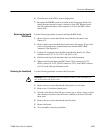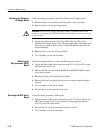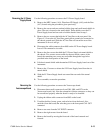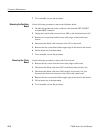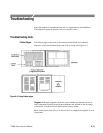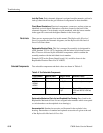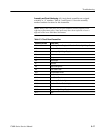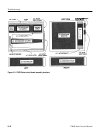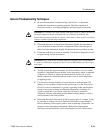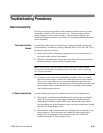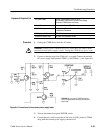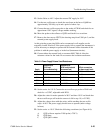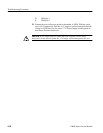
Troubleshooting
1780R-Series Service Manual
6–19
General Troubleshooting Techniques
1. Be sure the instrument is malfunctioning. See Section 2 to determine
whether the instrument is operating properly. Check the operation of
front-panel controls, associated equipment, and input signal connections.
CAUTION. Use extreme care when probing with meter leads or probes, because of
the high component density and limited access within the instrument. The
inadvertent movement of leads or a probe could cause a short circuit or transient
voltages capable of destroying components.
2. Determine the nature of the problem. Determine whether the instrument is
out of calibration or there has been a component failure. Once the type of
failure has been determined, identify the functional area most likely at fault.
3. Isolate the problem to a circuit or assembly. Use the block diagram as an aid
to signal tracing and circuit isolation.
CAUTION. Always remove the assembly from the instrument prior to attempting
to replace a soldered-in component. See Corrective Maintenance for the correct
procedure.
4. Visually inspect the suspect assembly for obvious defects. Look for chafed
insulation, components that are broken, loose, improperly seated, overheated
or burned, etc. Repair or replace all obvious defects. In the case of over-
heated components, determine and correct the cause of overheating before
re-applying power.
5. Use successive electrical checks to locate the source of the problem. The
primary tool for problem isolation is the oscilloscope. Use the Performance
Check Procedure to determine if a circuit is operating within specifications.
It may be necessary to change a calibration adjustment to determine if a
circuit is operational. Use caution, since this can destroy instrument
calibration. Note the adjustment position before making changes, so that it
can be returned to the same position.
6. Determine the extent of the repair. If the necessary repair is complex, it may
be advisable to contact your local Tektronix field office or representative
before continuing. If the repair is minor, such as replacing a component, see
the parts list for replacement information. Removal and replacement
procedures for the assemblies can be found under Corrective Maintenance.



